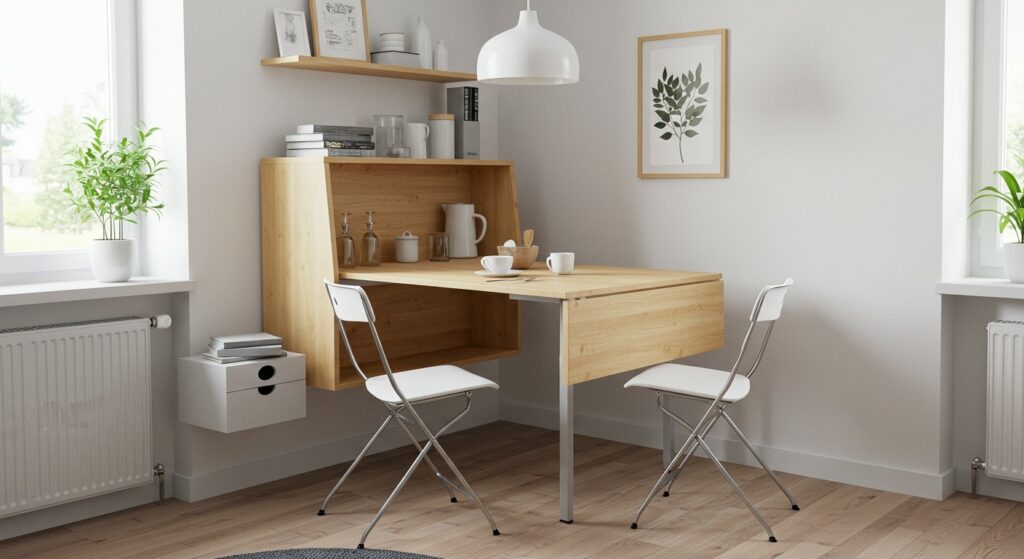Living in a smaller home doesn’t mean you have to skip family dinners or hosting friends. The challenge? Finding ways to fit a functional dining area without making your space feel cramped or cluttered.
I’ve been there – staring at a tiny corner of my apartment, wondering how on earth I could squeeze in a dining table without blocking the walkway to the kitchen. The good news is that with some smart planning and the right furniture choices, you can create a dining spot that works beautifully, even in the tightest spaces.
These 18 practical ideas will help you maximize your dining area while keeping it stylish and inviting. Whether you’re working with a studio apartment or just a small nook, there’s a solution here that’ll fit your needs.
1. Wall-Mounted Drop-Leaf Tables

A drop-leaf table attached to the wall is possibly one of the most versatile pieces you can add to a cramped dining area. When you’re not using it, the leaves fold down flat against the wall, taking up barely any space at all. Come dinner time, simply flip the leaves up and you’ve got a proper table.
The installation is straightforward, and you can choose from various sizes depending on your wall space. Some models even include built-in storage underneath for placemats or napkins.
This works especially well in narrow hallways or kitchen entries where floor space is precious. Just make sure you’re mounting it into wall studs for proper support.
2. Bench Seating with Storage
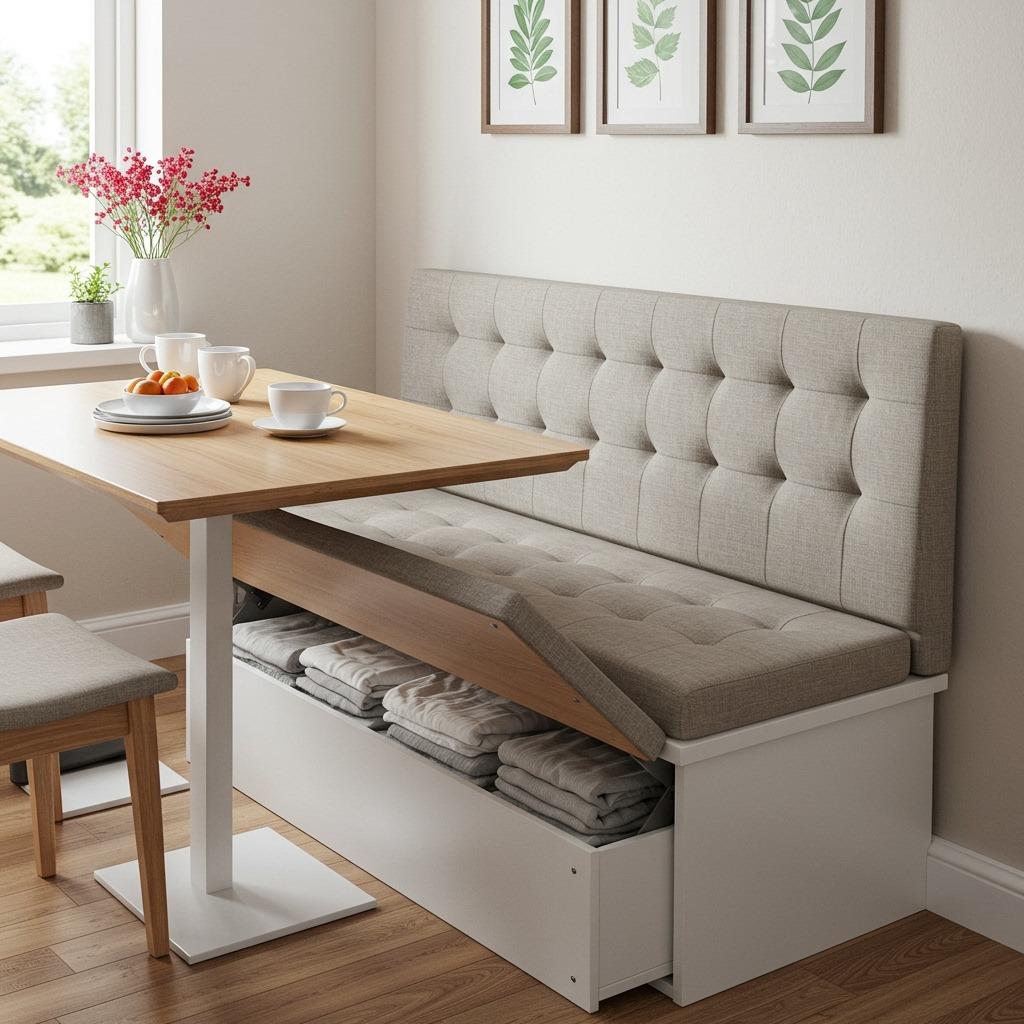
Swapping traditional chairs for a bench along one side of your table instantly opens up your dining area. Benches can slide completely under the table when not in use, unlike chairs that need clearance space to pull out.
The real magic happens when you choose a storage bench. Suddenly you’ve got a place to stash table linens, seasonal decor, or even extra kitchen supplies. It’s like getting two pieces of furniture in the footprint of one.
Plus, benches can actually seat more people than individual chairs in the same amount of space. Perfect for when you have unexpected dinner guests.
3. Extendable Dining Tables
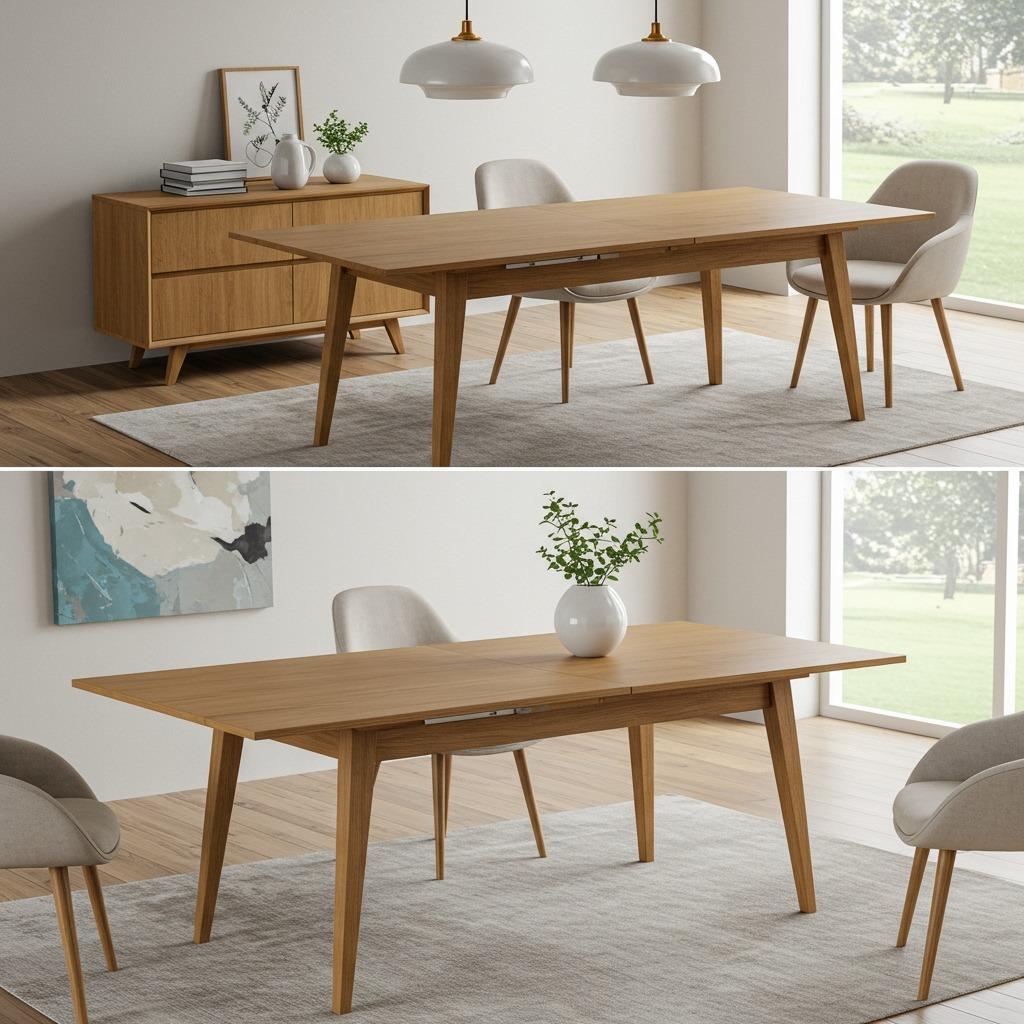
An extendable table is the Swiss Army knife of small space renovation dining solutions. Day-to-day, it stays compact and manageable. When you’re hosting, it expands to accommodate everyone comfortably.
Modern designs have come a long way from those clunky mechanisms your grandparents had. Many now feature smooth butterfly leaves or pull-out extensions that take seconds to set up. Some even have hidden storage for the extra leaves right within the table itself.
Look for styles with slim profiles and clean lines to keep the visual weight minimal in your space. Round extendable tables work particularly well in tight corners since they don’t have sharp edges protruding into walkways.
4. Nesting Chairs

Here’s something I didn’t appreciate until I actually tried it – chairs that nest or stack. When you’re done eating, these chairs tuck away into each other or stack vertically in a corner, freeing up valuable floor space.
The trick is finding nesting chairs that don’t sacrifice comfort or style. Many contemporary designs manage to be both functional and attractive, with molded seats and interesting materials like clear acrylic or bent wood.
Some families keep just one or two chairs at the table daily and bring out the nested extras only when needed. It’s a simple habit that makes the room feel more spacious most of the time.
5. Corner Banquette Seating
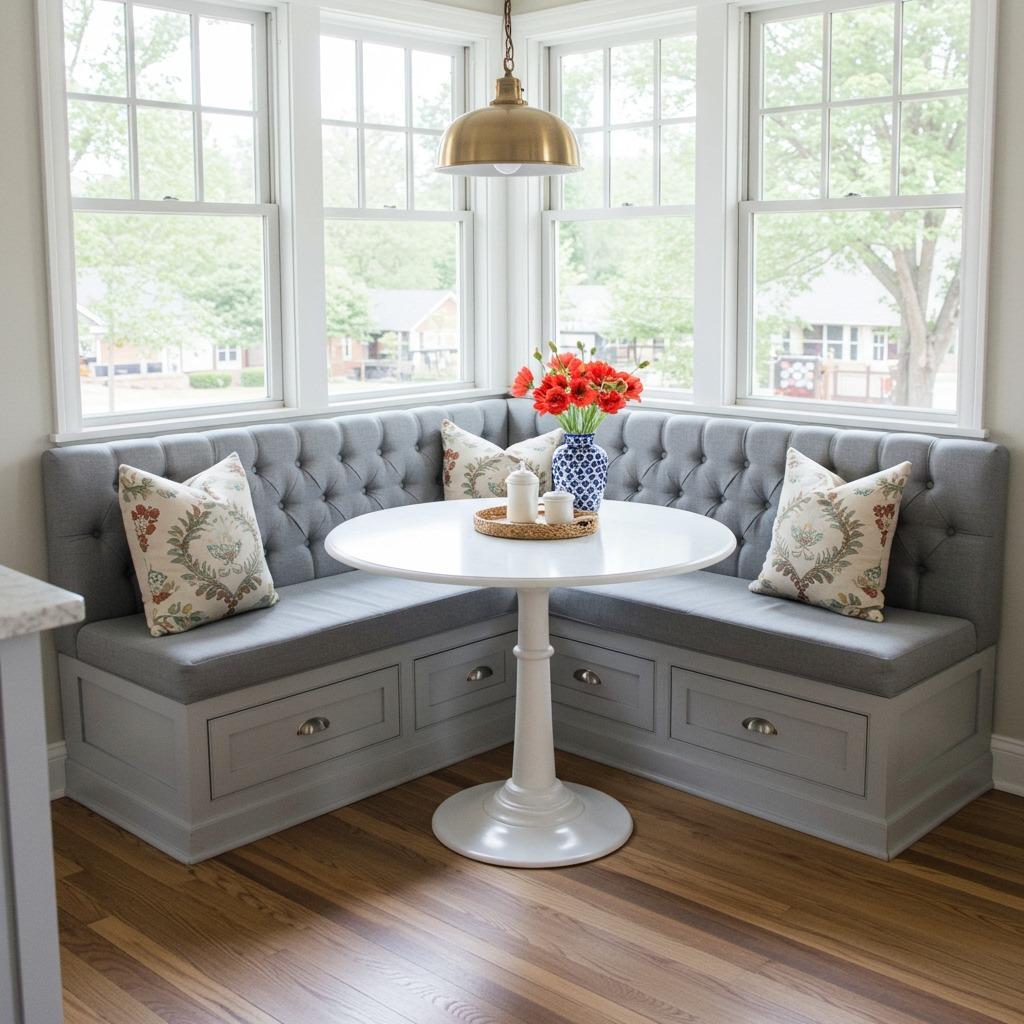
If you have an unused corner in your kitchen and dining ideas space, a built-in banquette might be your best move. This creates a cozy dining nook that uses every inch of that corner, including the typically dead space right at the intersection of the walls.
Built-in banquettes look custom and intentional, adding real character to your home. They also eliminate the need for chairs on two sides of the table, which means less visual clutter and more walkway space.
Many homeowners add lift-up seats to their banquettes for hidden storage. It’s perfect for keeping bulky items like serving platters or small appliances out of sight but easily accessible.
6. Floating Breakfast Bar
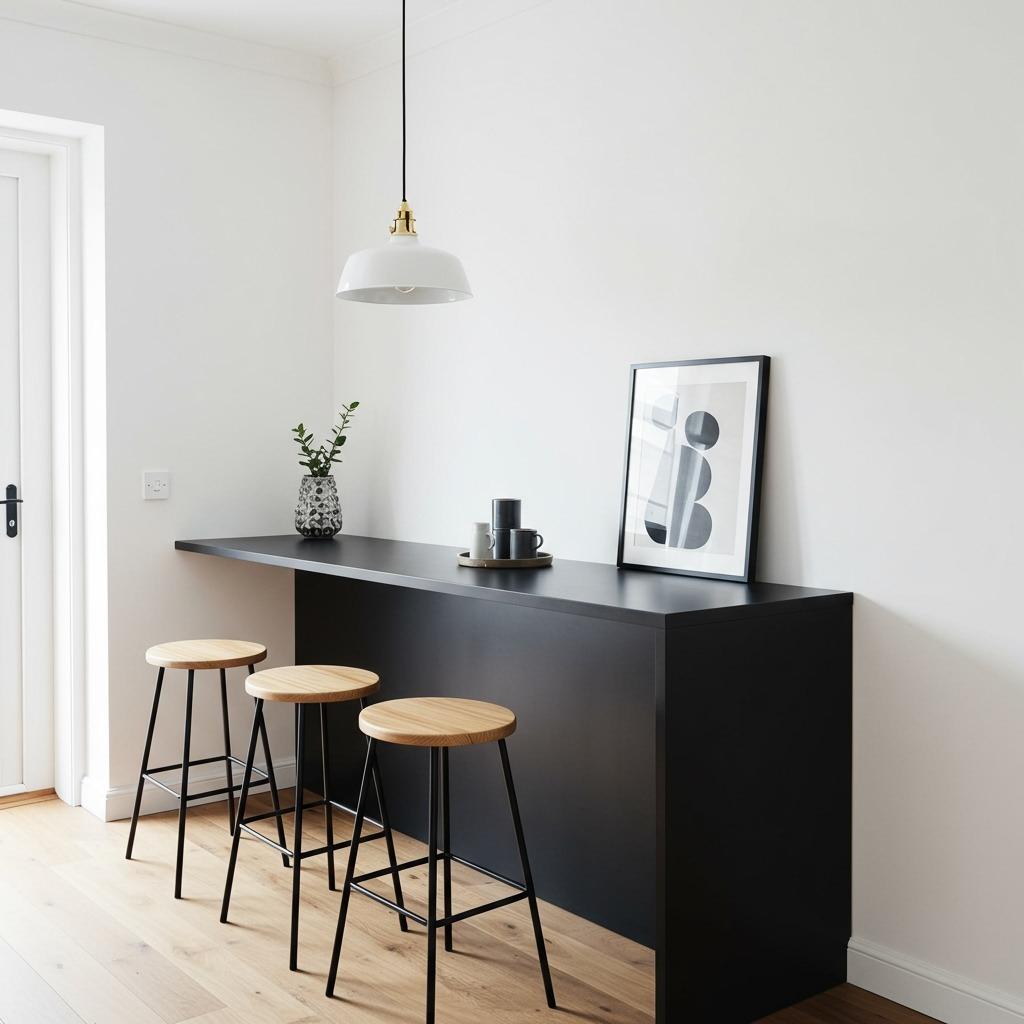
When your space is really tight, consider skipping the traditional table altogether and installing a floating breakfast bar. This slim counter extends from the wall and provides just enough surface for casual meals without eating up floor space.
Breakfast bars work beautifully in studio apartments or small bathroom renovation projects where every square foot counts. Pair it with backless stools that slide completely underneath, and you’ve got an almost invisible dining solution.
The height also makes it double as a workspace during the day – multi-purpose furniture at its finest. You can install it at counter height or bar height depending on your preference and ceiling clearance.
7. Glass or Acrylic Tables
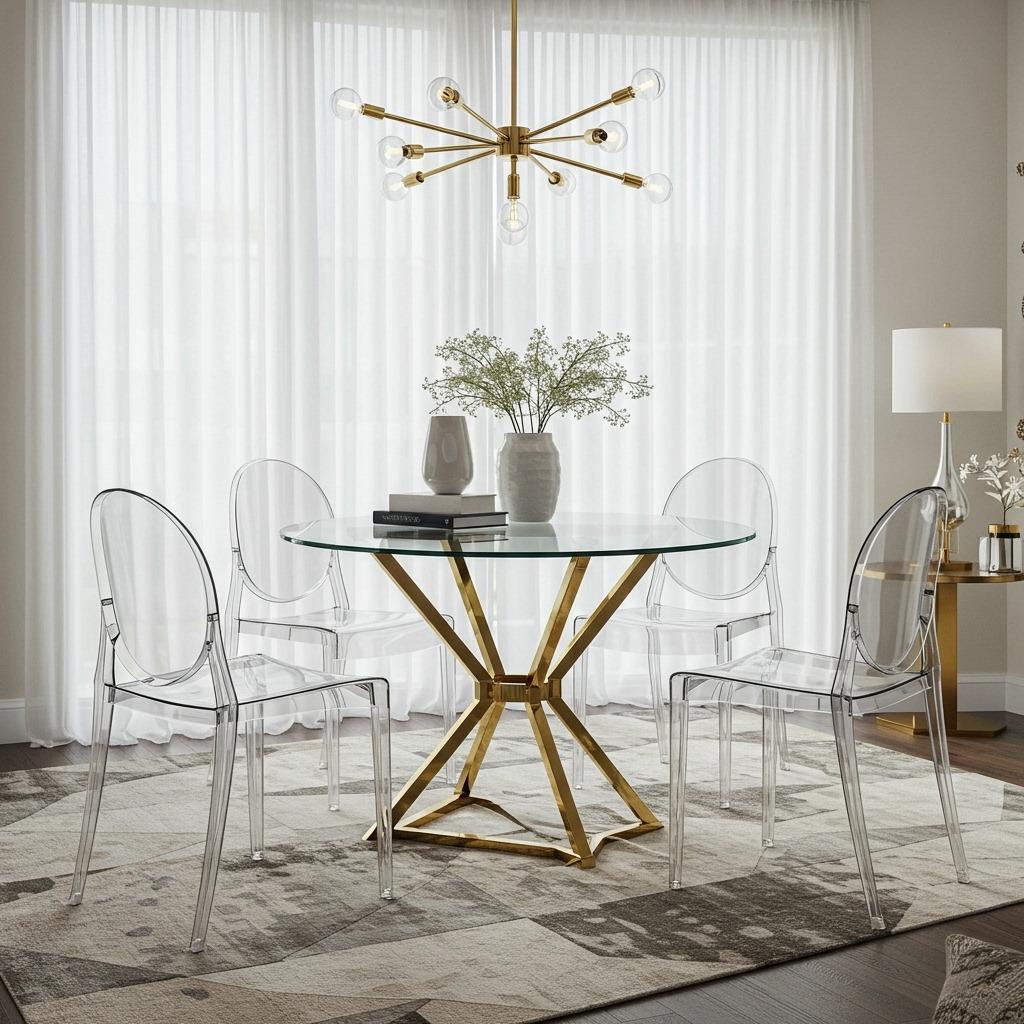
Sometimes the solution isn’t about actual size but visual weight. A glass or clear acrylic table takes up the same physical space as a solid wood one, but it practically disappears in the room. This optical illusion makes your dining area feel more open and airy.
These transparent tables work especially well in darker spaces or rooms with limited natural light. Light passes through them rather than being blocked, which brightens the entire area.
The maintenance is honestly not as bad as people think. A quick wipe with glass cleaner keeps them looking pristine, and they’re surprisingly durable with today’s tempered glass options.
8. Fold-Down Murphy Tables
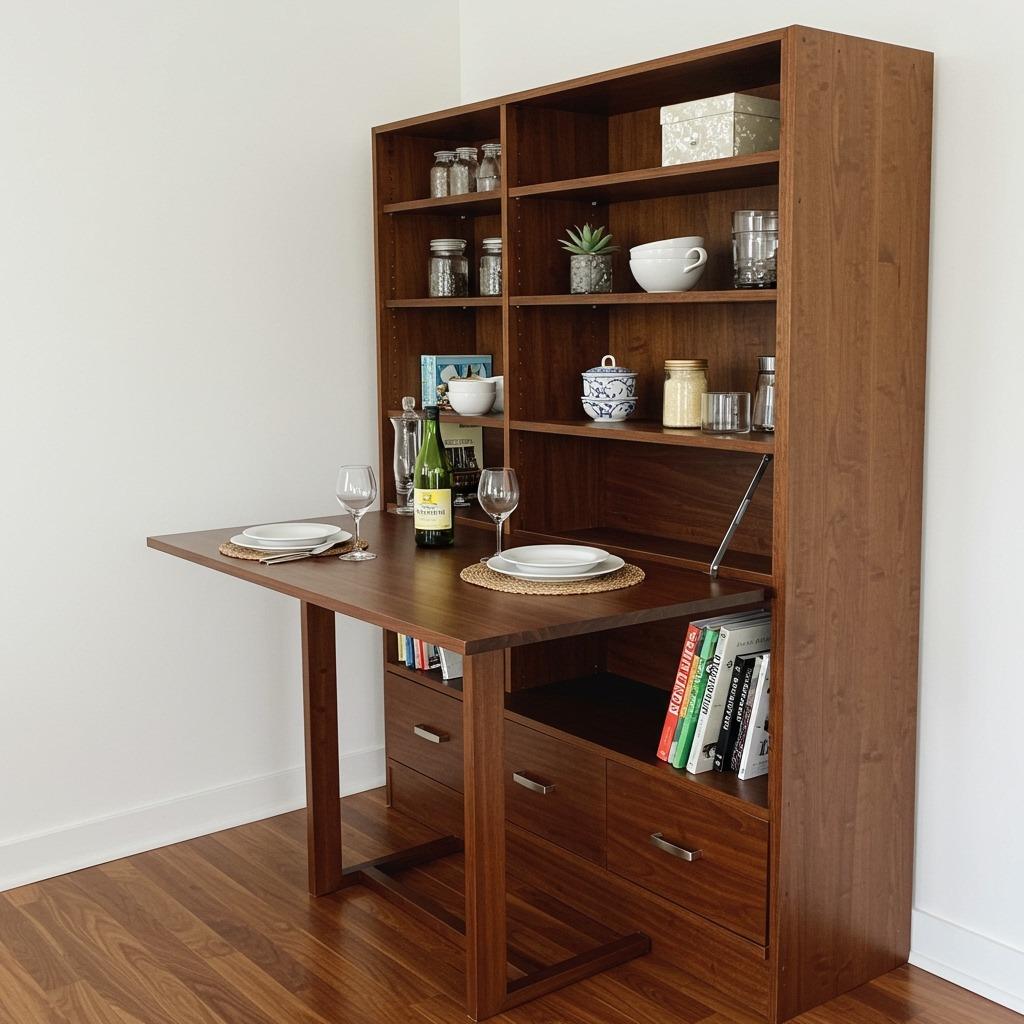
Murphy tables are the dining room equivalent of a Murphy bed – they fold up against the wall when not in use. This is absolutely the most space-efficient option if you only need a dining table occasionally.
Some designs include mirrors or artwork on the reverse side, so when the table is folded up, it doubles as wall decor. Others integrate with shelving units or cabinets for a seamless look that doesn’t scream “hidden table.”
The installation does require some planning and proper wall anchoring, but the payoff is incredible. Your dining area can completely vanish when you need the space for other activities.
9. Round Pedestal Tables
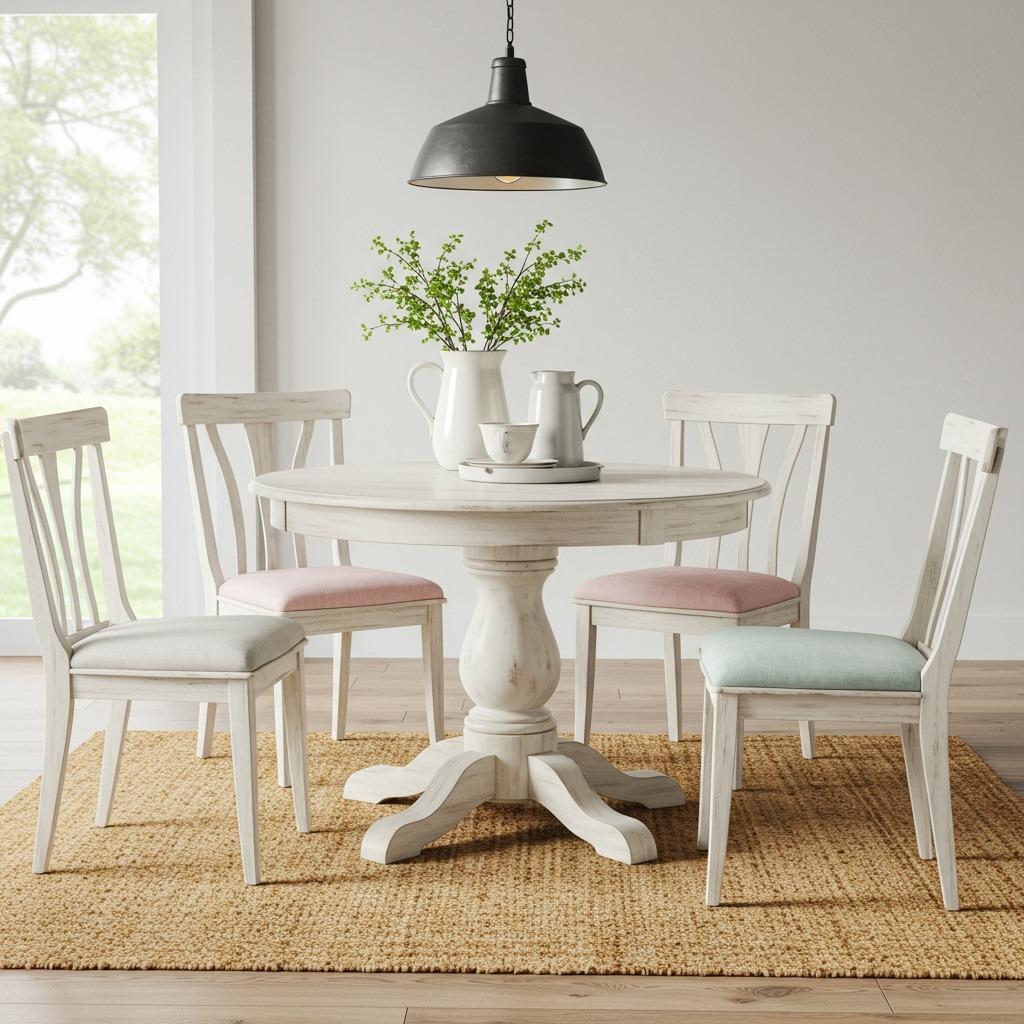
Square and rectangular tables have corners that jut out into your space, but a round table with a single pedestal base maximizes both seating capacity and flow. You can squeeze more chairs around it because there are no corner legs limiting where people can sit.
The single center pedestal also means better legroom for everyone. No one’s knocking their knees on table legs or fighting for the corner seat. This makes the dining experience more comfortable in an already compact area.
Round tables naturally encourage conversation too, which is a nice bonus. Everyone can see and easily chat with each other without craning their necks.
10. Bar Cart as Serving Station
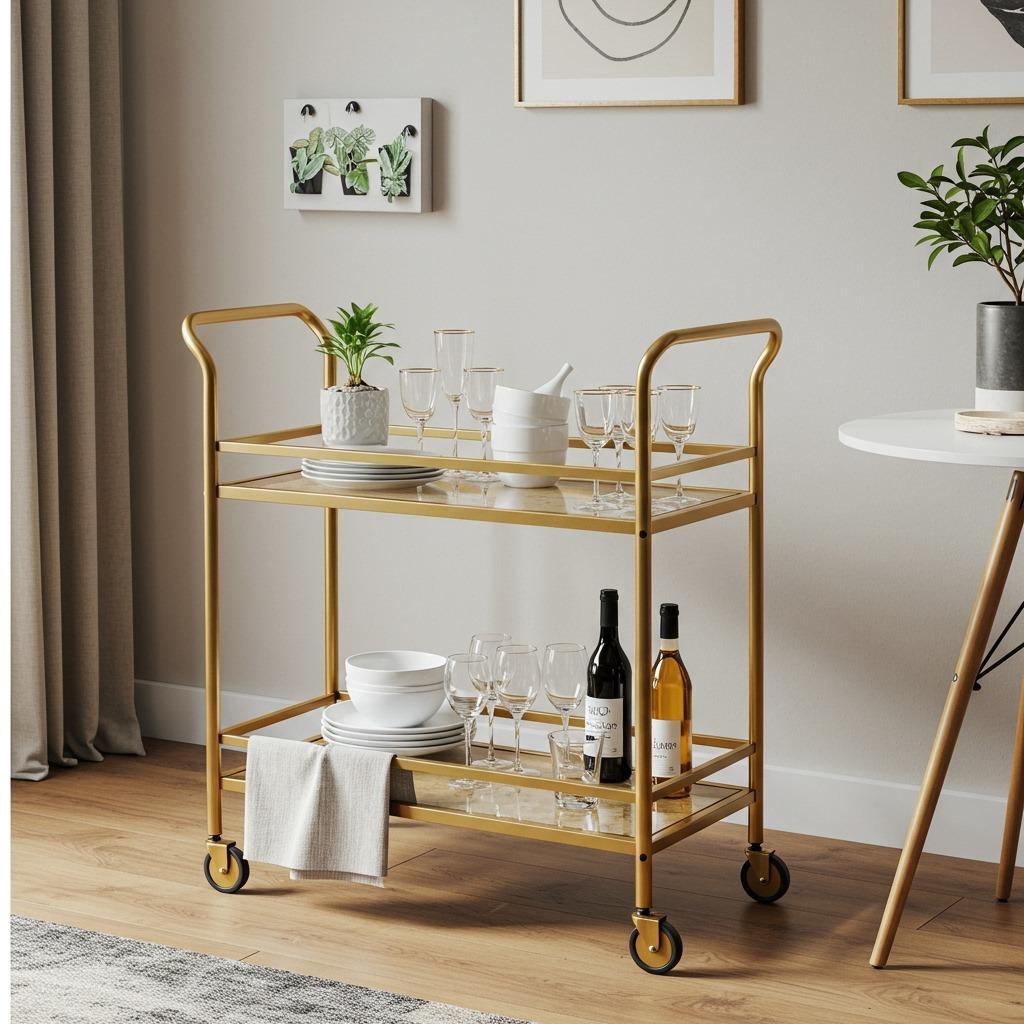
Here’s something that helps indirectly – moving your serving pieces, beverages, and extra dishes off the table itself. A slim bar cart on wheels can hold everything you need within arm’s reach without crowding the actual dining surface.
The mobility is key here. Roll it out when you’re setting up for a meal, then tuck it into a corner or against a wall afterward. Some people even roll theirs into a closet when it’s not needed.
11. Window Seat Dining Nook
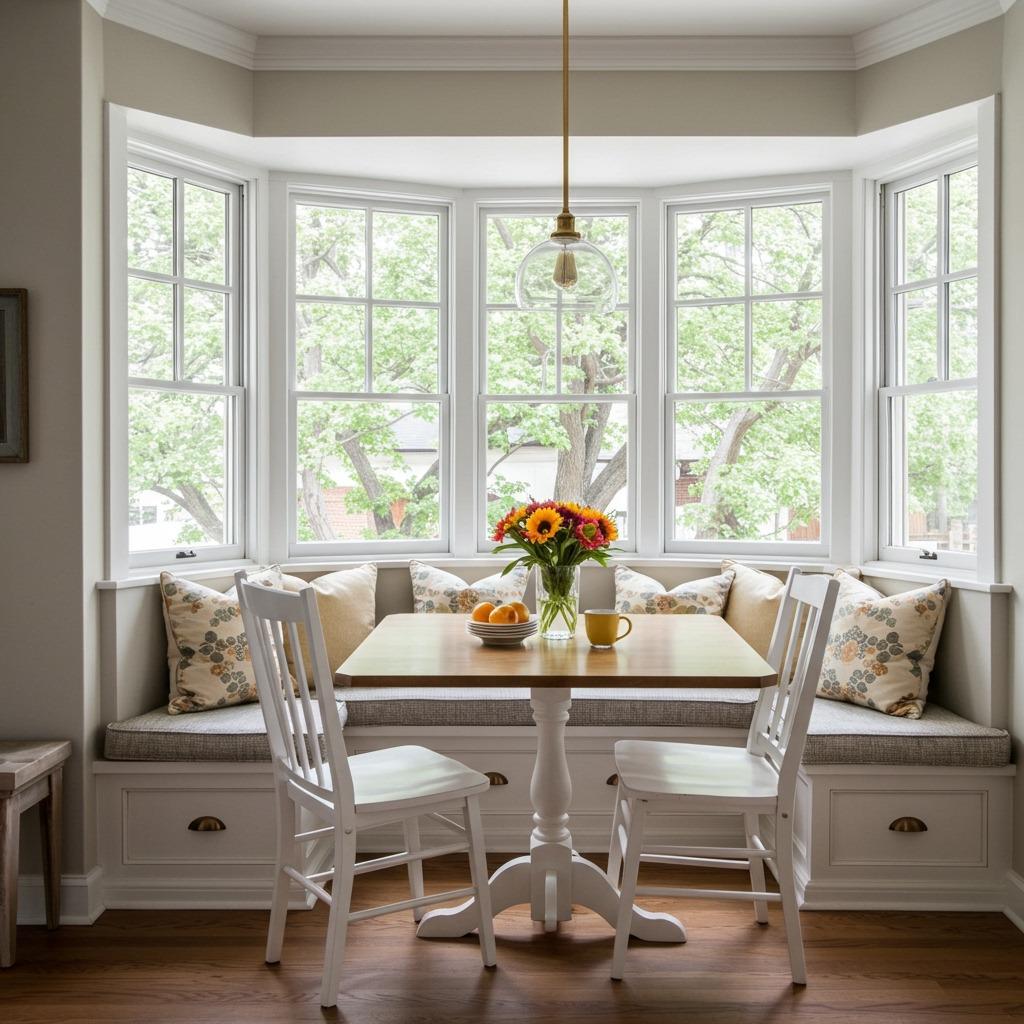
If you have a bay window or wide window area, transforming it into a dining nook might be perfect. A built-in window seat along the window wall paired with a small table creates an intimate dining spot that takes advantage of otherwise unused space.
The natural light flooding in makes the area feel more spacious than it actually is. Plus, dining with a view – even if it’s just your backyard or street scene – somehow makes every meal feel special.
Add some comfy cushions and throw pillows to the window seat, and this becomes everyone’s favorite spot in the house. It’s equally great for morning coffee as it is for dinner parties.
12. Console Table Conversion
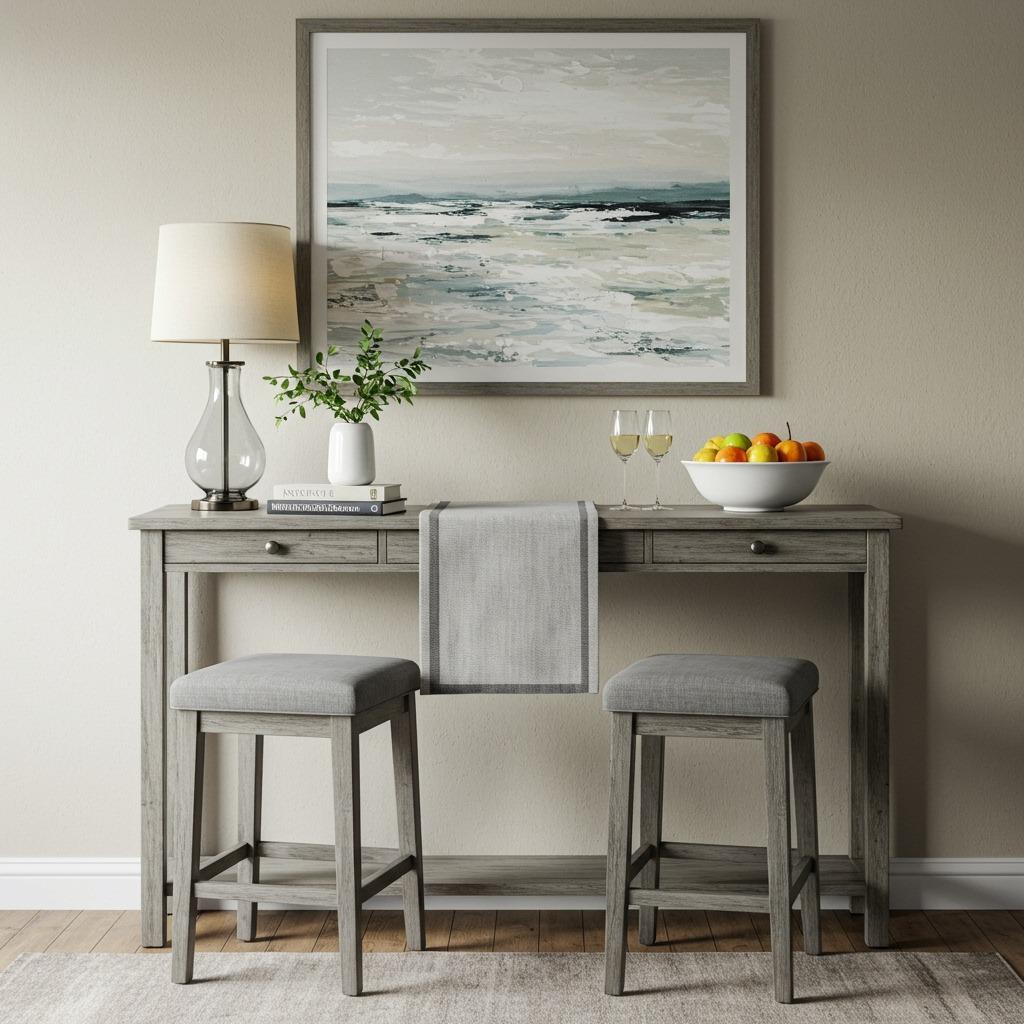
A narrow console table can double as a dining surface for one or two people and looks like regular furniture when not in use. This works especially well for singles or couples who don’t need a full-sized table daily.
Choose a console that’s the right height for dining (around 30 inches), and pair it with stools or chairs that tuck completely underneath. When you’re not eating, it functions as a display surface for decor, a mail sorting station, or even a workspace.
Some console tables come with fold-out leaves or drop leaves that expand the surface when needed. These hybrid pieces are worth seeking out if you occasionally need more seating.
13. Utilize Awkward Spaces
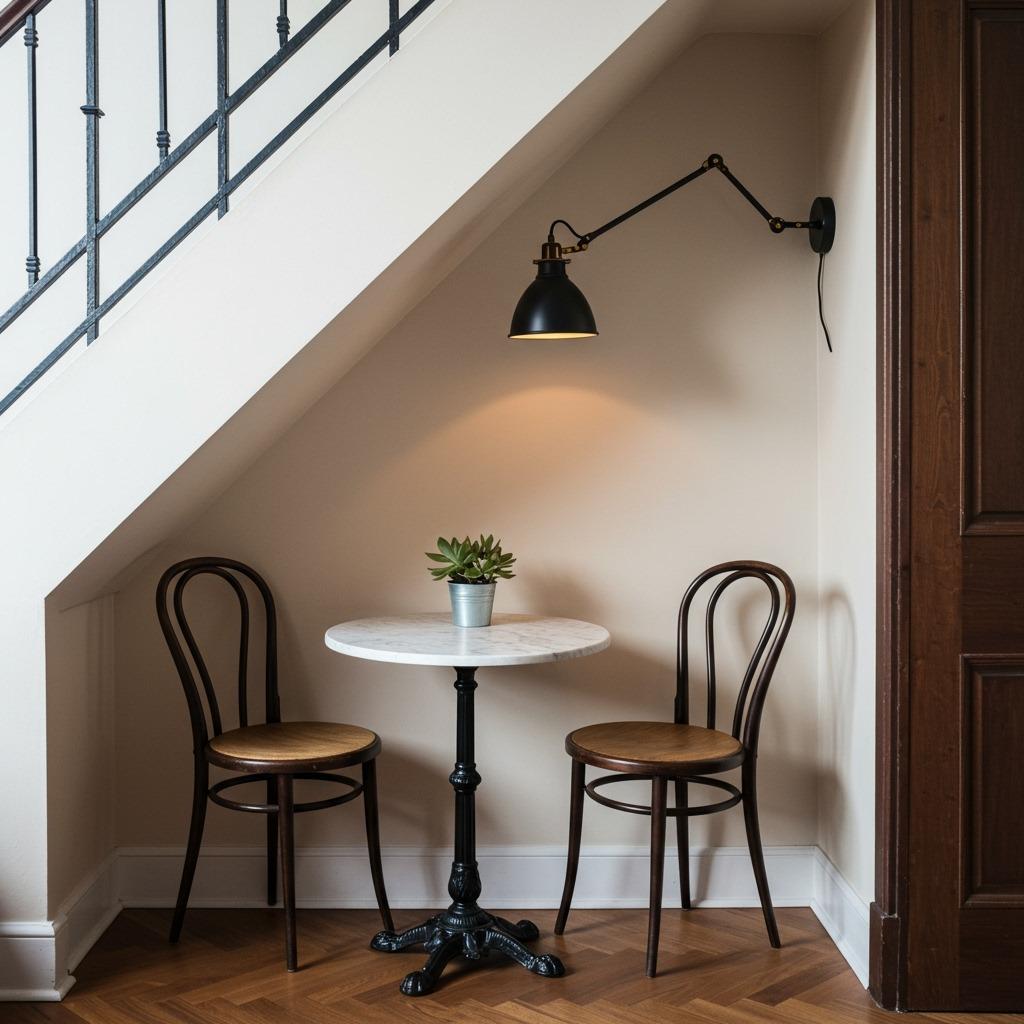
That weird narrow space between your kitchen and living room? The area under the stairs? These awkward spots that don’t work for much else can be perfect for compact dining solutions. You’re essentially using space that would otherwise go to waste.
Sometimes all it takes is a small bistro table and two chairs to create a functional dining area. The key is measuring carefully and choosing appropriately scaled furniture that fits the dimensions without forcing it.
These tucked-away dining spots often become conversation starters. Guests always seem charmed by creative use of unusual spaces, especially when styled thoughtfully with good lighting and a few decorative touches.
14. Mirrored or Reflective Surfaces
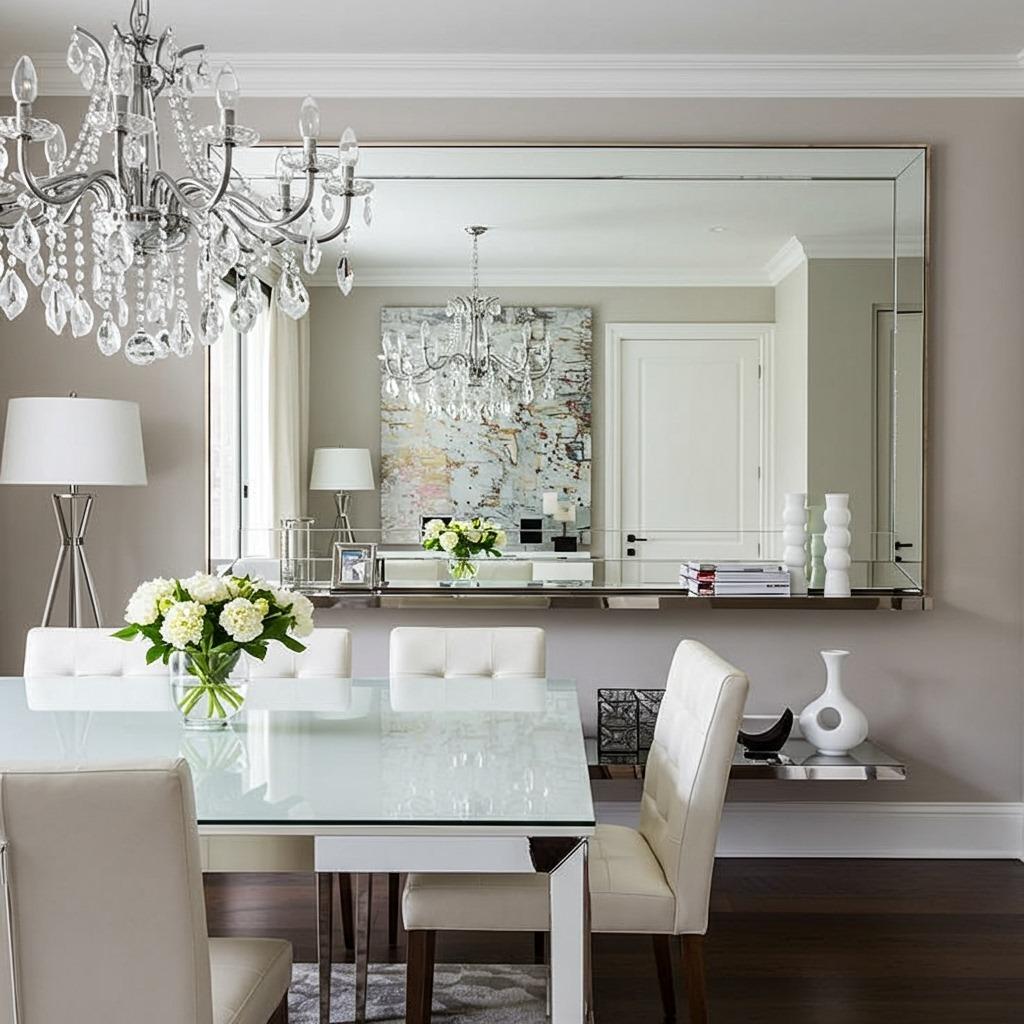
Similar to glass tables, incorporating mirrors near your dining area creates the illusion of more space. A large mirror on the wall behind or beside your table reflects light and visually doubles the room’s perceived size.
You could also opt for a table with a mirrored or high-gloss finish. These reflective surfaces bounce light around the room and add a touch of glamour while maintaining that open feeling.
Just be mindful of placement – you don’t want mirrors positioned where they’ll create awkward reflections during meals. The goal is to enhance the space, not make dining feel like eating in a funhouse.
15. Multi-Purpose Furniture
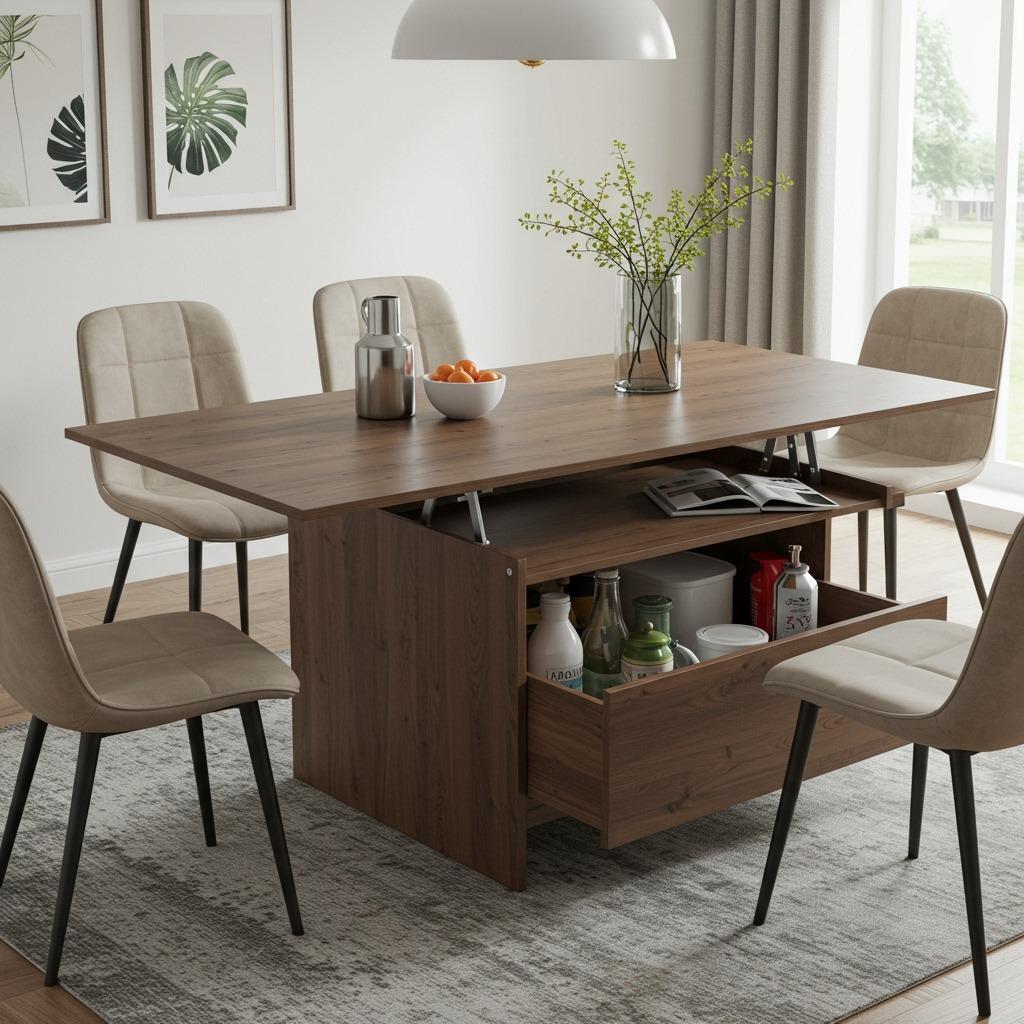
Why have a piece that only serves one function? Look for furniture that works overtime. A dining table with built-in storage drawers. A buffet that converts into extra seating. A table with adjustable height that works for dining, desk work, and crafts.
I’ve seen kitchen islands with pull-out leaves that expand for dining and retract for cooking prep. There are ottomans with trays that transform into side tables or extra seats. The options are endless once you start looking at furniture through this multi-use lens.
This approach aligns perfectly with affordable home upgrades that maximize value. You’re getting more functionality without spending money on multiple pieces or using up extra space.
16. Light Color Palettes
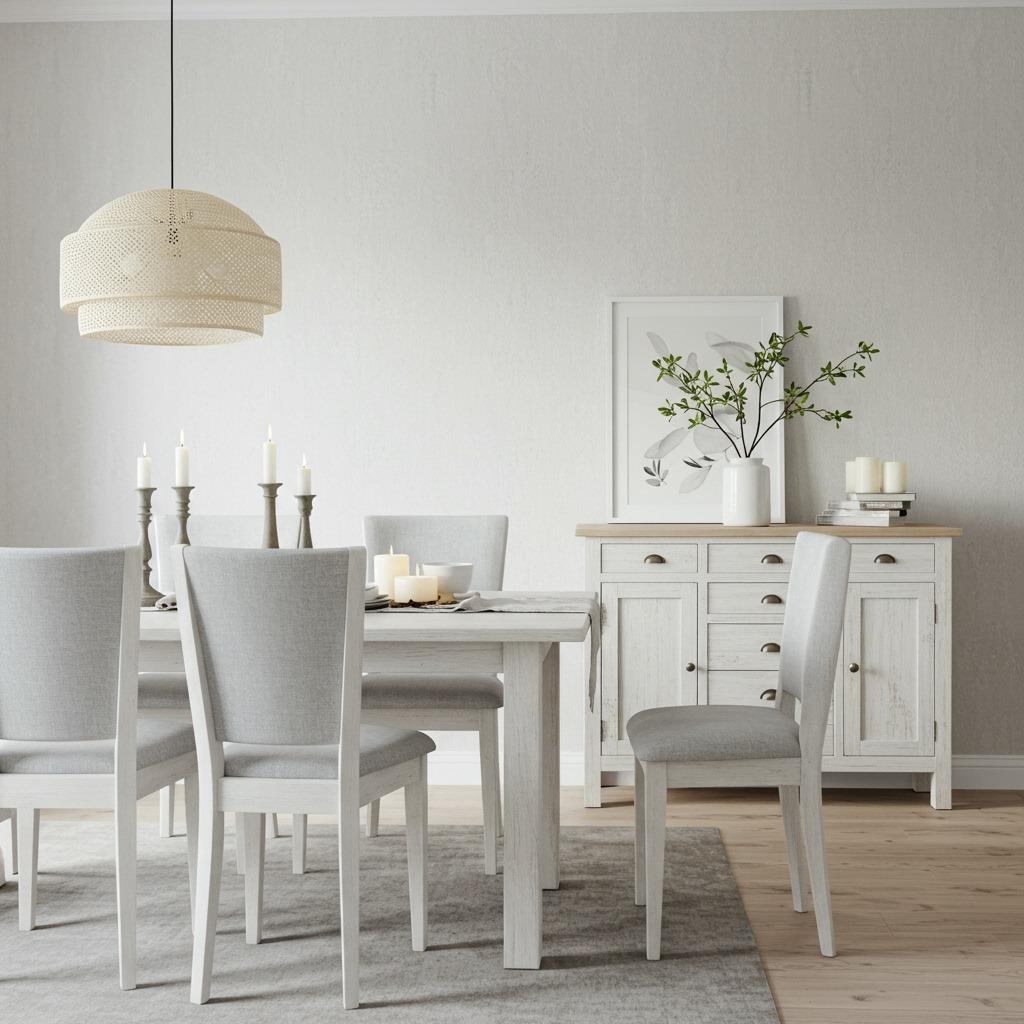
This might seem purely aesthetic, but color choices genuinely affect how spacious your dining area feels. Light, neutral colors on walls, furniture, and decor make spaces feel larger and more open. Dark colors absorb light and can make tight spaces feel even more confined.
Stick with whites, soft grays, pale woods, and pastel accents for your dining furniture and surrounding decor. These colors reflect natural and artificial light, brightening the entire area.
That doesn’t mean everything needs to be stark white – you can still have personality. Just keep the overall palette light and add pops of color through easily changeable elements like cushions, artwork, or table settings.
17. Vertical Storage Solutions

When you can’t expand outward, go upward. Floor-to-ceiling shelving or tall cabinets near your dining area provide tons of storage for dishes, glassware, and serving pieces without taking up precious floor space. This keeps your table clear and your room feeling less cluttered.
Floating shelves arranged vertically draw the eye upward, which makes ceilings feel higher and rooms feel more spacious. Plus, they’re a chance to display your pretty dishes or home improvement ideas decor items that add personality to the space.
Open shelving works well if you have attractive items to display, but closed cabinets might be better if you prefer a minimalist look or have mismatched dishware you’d rather hide.
18. Strategic Lighting Choices
Good lighting can completely transform how spacious a dining area feels. A well-placed pendant light draws the eye upward and defines the dining zone without taking up any floor or table space. Wall sconces free up table surface while providing ambient lighting.
Avoid bulky floor lamps or table lamps that crowd your limited space. Instead, go for ceiling-mounted fixtures, track lighting, or slim wall-mounted options. Dimmer switches let you adjust the mood from bright and energizing for daytime meals to soft and intimate for evening dinners.
Consider the size of your fixture too. A too-large chandelier can overwhelm a small space, while a too-small one looks out of proportion. The general rule is that your light fixture should be about half to three-quarters the width of your table.
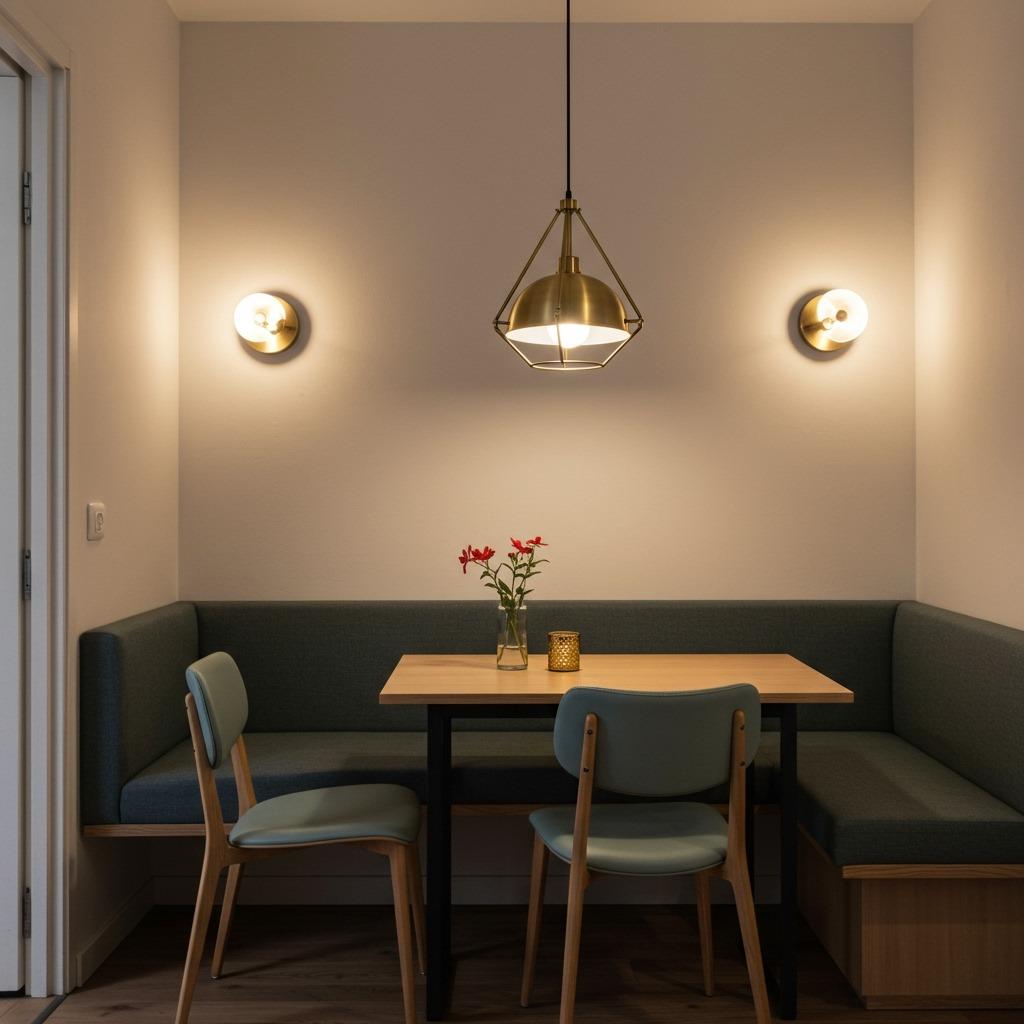
Creating a functional dining area in a small space is absolutely possible with the right approach. The key is being intentional about every element – from furniture that multitasks to design choices that create visual spaciousness.
You don’t need a sprawling formal dining room to enjoy meals with family and friends. Sometimes the coziest, most memorable dinners happen at tiny tables in creatively designed spaces. Start with one or two of these ideas that resonate with your specific situation, and you’ll be surprised how much better your dining area functions and feels.

